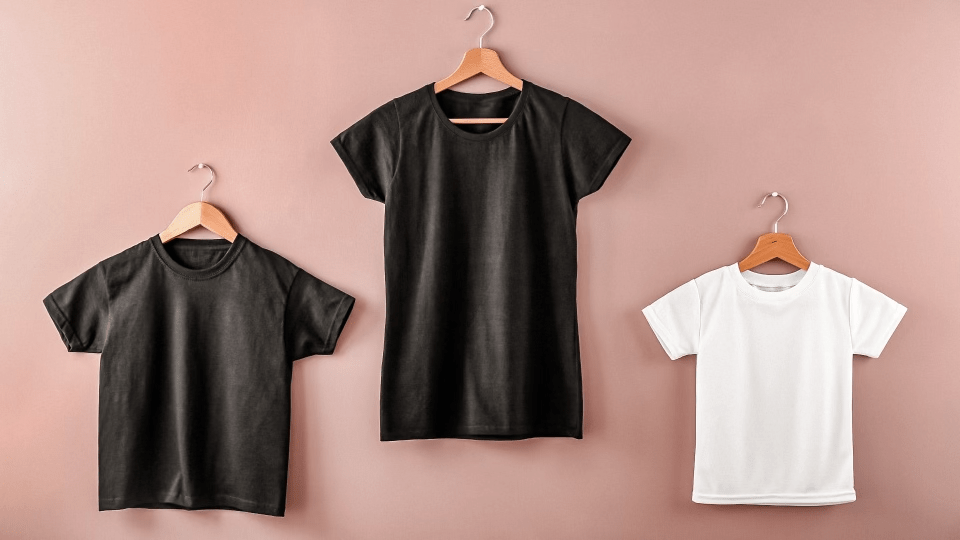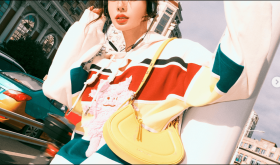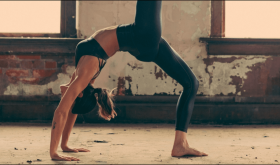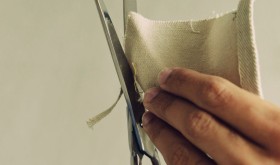
When it comes to standardized sizing and size inclusivity in the fashion industry, most consumers agree brands should offer a wide spectrum of sizing options so that people of all shapes and sizes can feel included.
This post was inspired by a conversation I was having with my LMCL students in office hours. Currently, I have quite a few tall ladies making brands to serve tall-girl needs, because there is literally nothing out there for them.
Now, a few people in the class thought this was odd, because aren’t clothes made for super tall and skinny runway models? How could it be that be they can’t find anything that fits?
That lead us into a 2-hour discussion on body types, fashion, and financials, and what inspired me to write this…
YOU’RE CANCELLED, YOU’RE CANCELLED, EVERYONE’S CANCELLED
Thanks to cancel culture, many influencers and internet mobs have canceled a host of small businesses that they claimed could never be part of the ethical and sustainable fashion movement because they were not size-inclusive. To influencers, the most important point in regards to sizing is that everyone no matter their size should be able to buy from any brand that considers themselves ethical, sustainable, or conscious.
Don’t carry higher than a size XL? You’re canceled. A couple of months later, it turned into: Don’t carry a size higher than an XXL? Canceled. And this went on for about a year and a half. Now, brands carrying plus-size sustainable fashion up to a three-XL or four-XL are experiencing backlash.
So what do brands do? They carry as many sizes as they possibly can. While it seems like this is a great thing because everyone should be able to buy clothes no matter their body type, it’s actually pretty terrible for quite a few reasons and I’m going to explain why.
REMEMBER WE ARE ALL WORKING TOWARDS THE SAME GOAL
I want to say very clearly before we get started I am not against extending size or inches. But, the way we are going about it is all wrong. This article is about teaching you how very short-sighted influencer solutions are actually going to lead to much longer-term problems.
As you read this article, you might get a little angry about the reality of how the fashion industry works. But, that’s okay. Because when you really understand what’s going on, you are going to be able to demand changes in a way that will actually change the way the fashion world operates.
Because, what’s the point of all of this if real change isn’t made?
My goal with this article, like with all the free content I create is to teach people how to create better more thoughtful products.
So put away your Internet pitchforks, get ready to learn, and be a real changemaker. I’m going to explain why being size inclusive can be a bad thing. And, what brands that don’t participate in it shouldn’t necessarily be canceled right away.
WHAT WE WILL COVER
First, we are going to talk about what sizes are, and get a little history lesson on how standardized sizes have evolved. Then we will move right into the pitfalls of size inclusivity including environmental factors, and less than mediocre plus size products. And lastly, I will give a few solutions that I think might just benefit everyone – both brands and customers.
THERE IS NO SUCH THING AS STANDARD SIZING, TO BEGIN WITH
You might have heard the term standardized sizing thrown around by influencers as a way to make fashion more inclusive, and even cut down on waste.
Both of these idea are totally false. And, I teach you why.
In its most basic form, standardized sizing is a way for brands to communicate the size of garments to their customers.Sounds pretty simple, right?
If only it was.
Before we get any further, allow me to give you a quick history lesson on standardized sizing.
THE FIRST STANDARDIZED SIZES
While the first glimmers of standardized sizing date back to the 1500s when Spanish tailor Juan de Alcega was concerned with trying to find a way to use the least amount of cloth possible for clothing garments. During people were buying custom clothes that were tailor-made to fit them. Or they were making their own clothes.
They didn’t really start buying pre-made clothing around the late 19th century.
And, when this happened, companies needed to find a way to let customers know what size they would be so they could order what was right for them.
But who was in charge of creating the sizing system?
The start of sizing was pretty chaotic as there were tons of different size rules that different tailors used. Basically, back then, there was as much inconsistency as there is today.
During the American Civil War, thousands of soldiers were measured and with that data, a set of size standards were created based on averages.
Now, while we had somewhat standardized sizing for men, women’s sizing was still all over the place. And was actually based on age.
So a size 14 would be for a 14-year-old. And the only measurement that really mattered for women was bust.Then in 1939, the U.S. government funded a project to create women’s standardized sizing. This is because at the time lack of accurate sizing was costing manufacturers over $10 million dollars a year.
IMPERFECT DATA PROBLEMS
But unfortunately, the research was biased and did not totally solve the problem. Essentially, 15,000 women were measured, but the women did not represent a cross-section of American women. Since the survey was done on a volunteer basis, it was largely made up of women of a lower socioeconomic status who needed the participation fee. It was also primarily white women. And the measurements still primarily relied on bust size, assuming women had an hourglass figure.
Nonetheless, the first standardized sizes were born.In the years since, ASTM International, a private organization that comes up with voluntary sizing standards and and size charts published a table of body measurements for women’s sizing, using the basic nomenclature and system developed by the 1958 commercial standard. But the numbers have not been reinvented.
In fact, the ASTM recommendations have evolved over time to accommodate vanity sizing: Meaning, women don’t want to know their real size, so manufacturers re-label bigger clothing sizes with smaller numbers.
SIZING TODAY
Just how much has vanity sizing changed over the past 50 or so years? Well, listen to this! A 1958 size 8 would be a 2008 size 14 or 16. So, that’s basically double.
Needless to say, vanity sizing has served to further confuse sizing across various brands, disrupting any sort of “standard.” Because clothing brands have caught on to the fact that consumers tend to make buying decisions with their emotions rather than quantitative numbers and averages. People are so motivated by the size of their jeans that they will actually resist buying jeans a size larger than what they want to be and they’ll go to another brand offering a similar product with the size label they want. They still look the same in the mirror and weigh the same on the scale. But something in their mind makes them feel better because they’re a size 6 instead of a size 8.
It’s kind of crazy when you think about it—how much a tiny label inside your pants can dictate what it is you do and don’t buy. And brands are desperate for your dollars so they resort to vanity sizing.
Ok, now that we understand how garments are sized, and what these sizes really mean (basically nothing). We can start talking about the issues with inclusive sizing in this broken system.
MORE SIZING OPTIONS CAN CREATE MORE WASTE
I’ll give you an example. Brand One is a startup. When they first launch, they want to offer every single size, but due to a variety of reasons including budget, they’re not able to.
So, they start with small, medium, large, and extra-large sizing options, terrified they are going to be canceled in the process.After season one, Brand One looks at the data. The smalls sold out immediately, then the mediums. They still have larges and extra larges left, and virtually none of the extra larges got sold.
What that data tells us is that their community, their customers, just weren’t that size. If they were, the larges and x-larges would have sold.
Imagine if they had invested capital into creating 2x-5x sizes that also ended up sitting in their garage?!
THE ISSUE WITH BRAND ONE IS WASTE
I think basically everyone in the sustainable and ethical fashion space would agree that the less we can waste, the better.But here is the problem: Rushing to create every size possible for every customer is a recipe for deadstock inventory.
Here’s what happens. Generally, the fashion industry makes decisions based on data.
Yea, I know when, you think of the fashion industry you probably think of models, parties, and creativity. But, behind every creative genius, is someone crunching the numbers.
Brands will look at what styles sold, what styles didn’t sell, and what size mixes did the best. They will then plan their next season based on that data.
But when brands are pushed to rapidly develop size ranges they do not have historical data to go off of, they have no way of determining whether or not that extra product they create will sell. Therefore, they run the risk of a business loss as well as creating unnecessary waste.
PATIENCE IS A VIRTUE
The problem is that influencers want change and they demand it now. And, fashion (and quite honestly the world) just doesn’t work like that). Things take time if you want them done correctly.
The right way of offering more sizes to customers is testing a few sizes in a few styles, analyzing the sales data, and then making ordering decisions in the future based on those numbers, not emotion.
The problem is, doing this takes a long time. And, what I think influencers need to realize is that just because they don’t see everything they want, like right now, that doesn’t mean there is someone behind the scenes working on it.
Developing a size-inclusive line, in a conscious and waste-free way could take brand years. Not a session.
OFFERING MORE SIZING OPTIONS COSTS BRANDS MORE MONEY, SO QUALITY IS OFTEN COMPROMISED
Now let me tell you another story.
Brand Two is established. They’ve been in business for almost a decade, and they have a pretty solid customer base. A few years ago, the internet mob came at them demanding they offer extended sizing, so they did.
But the larger sizes didn’t sell as well as they hoped they would. For all the people sliding into the brand’s DM’s and writing them angry emails, they thought their sales would be a lot higher. But they weren’t.
THEY MUST HAVE DONE SOMETHING WRONG
Now you might be saying to yourself, well I bet Brand Two didn’t represent those body types in their images or didn’t market properly the people who would be wearing those extended sizes. But they did. They did it so well in their campaigns that every type of body type was included (and it cost them a small fortune in photoshoot fees). Nonetheless, the garments didn’t sell – all those people demanding larger sizing in their DMs ghosted them?. And when they did sell, they had a return rate of almost 100%.
The issue with Brand Two is finances. They had some past sales data, they had customers making demands, but what happened was money got in their way. Let me explain.
Brand two had good intentions. They really did want to offer sizing to everyone that wanted to be part of their community.They just had one thing standing in their way. And that was money.
Now here’s something that you might not realize: Most “successful” small businesses aren’t as successful as many people think. They are just barely squeaking by.
And creating extended sizing is a crazy expensive endeavor to take on if you are going to do it right.
FIRST YOU NEED TO UNDERSTAND HOW A GARMENT IS MADE
Before you can even start making a garment, you need a design.
Then when you know what you want to make, you need to source the materials.
Once you have all of that, you need to make something called a fit sample. A fit sample is basically your garment in the sample size. A sample is usually a size in the middle of your size range. So, if you were making a size range of small, medium, and large, your sample size would be a medium.
Now, there is a lot of misinformation out there about sample sizes. And, most influencers claim that brands use the smallest size to base their sizing on.
This is untrue and I’m going to tell you why.
BELIEVE IT OR NOT, SIZES AREN’T BASED OFF OF RUNWAY MODELS
The confusion stems from runway samples, which are totally different. A runway sample is exactly what it sounds like. A sample was made for a model to wear on a runway in a fashion show.
Runway samples are often sold in something called sample sales.
A sample sale is where a brand will sell all the different samples that were made during the development and production process. So, often at a sample sale you will find runway samples, but you will also find fit samples, SMS samples (salesman samples), top of production samples, and lots of other different kinds of samples. You might even find (and these are my absolute favorite) samples that were designed but never made it to the full collection (meaning they are totally one of a kind).
So, because super skinny runway model samples are sold at sample sales, influencers just kind of assumed this is what the sizing in stores was based off of. Wrong.
Pretty cool, how you see things differently when you really understand the system right?
BACK TO HOW A GARMENT IS MADE
Okay, so back to the fit samples. Once you have your garment absolutely perfect in the fit sample size, that sample is then graded up and down into all of the sizes you plan to run.
But here is the problem. With petite and plus sizing particularly, bodies have different proportions. You can’t take a size medium and just expand all the proportions to turn it into a size 3XL. Well, I guess you can, but it won’t fit right.
So, to make plus sizing and petite sizing wearable, what you need to do is create a totally new pattern, a totally new fit sample, and a totally new set of grade rules.
If you’re making a brand in conventional sizing, petite sizing, and plus sizing, you are essentially paying to develop three different brands all at once.
And the prices add up quickly, especially if you are manufacturing clothing ethically, or here in America.
PRODUCT DEVELOPMENT IS WAY MORE EXPENSIVE THAN MOST PEOPLE REALIZE
Let me give you an idea. A pattern will cost anywhere from $150-$450+. To grade a pattern, each size costs around an extra $50. So that means if you make your fit sample in a size medium and you want to create a size small and large, that’s $100 extra.
Then the fit samples will cost around $500 or more.
You also need to factor in sample fabric yards, zippers, buttons and all those other things. On average the cost of materials for a sample is around $150 – $500 depending on the type of materials.
And remember that while the cost of one sample is about $500, brands usually need at least 2- 3 samples before they can get the garment perfect and ready for production.
So basically to develop one style, a brand will pay about $3000-5000. But if they also want to offer petite and plus sizes, that will tack on an extra $6000-$10,000 to their development fee.
YEA A DRESS FOR $200 SOUNDS LIKE A LOT, BUT SOMETIMES THAT’S NOT EVEN ENOUGH FOR A BRAND TO BREAK EVEN
Now let’s look at how this affects the price of the garment.
For argument’s sake, let’s say the total garment cost to manufacture a MOQ of 100 pieces is $50 a garment. That is $5000 for the production total.
Based on the standard rules of retail, we would multiply that by four and the retail price would be $200. (Remember if the brand wholesales, meaning they sell in boutiques and other people’s stores, they can only sell the garment for about $100 to the store, and then the store charges $200).In this example, the brand’s margin is $150. So on an order of 100 pieces, they can make $15,000.
But then you need to subtract expenses. If the brand’s development fees were on the high side and cost them $10,000, that means they are only making a profit of $5,000. And we have not even discussed their operating costs yet. Basically, they are in the red.
BRANDS ARE DOING JUST ENOUGH TO NOT GET CANCELED
As a result of the costs involved in creating more inclusive sizing options (numbers don’t lie), brands are doing just enough to not get canceled. They’re cutting corners like grading a size medium to a size petite small and 6XL to save money during the development process instead of creating new propper patterns for each size category.In the end, when all is said and done, customers are left with a pretty crappy product. And this is why cancel culture is often counterintuitive.
The bottom line: Canceling a brand for not offering your size will not create a world where you will one day be able to wear that brand. It will create a world where that brand will half-ass their plus size range so you can’t cancel them. But the sizing and fit will be so terrible you still won’t be able to buy that dress you had your eye on anyway.
SO, WHAT’S THE SOLUTION?
If we aren’t demanding that brands offer all the sizes, what should we be doing instead?
EMBRACE NICHE, NOT STANDARD SIZES!
For some reason, influencers and internet mobs have decided that the solution to size inclusivity lies in standardized sizing.
And that every brand should fit every body type.
And, TBH I think that is totally nuts.
Think about it this way. I bet every person reading this has their go-to brand. That brand that just always seems to fit them right. For my mom, it’s Ann Taylor Loft Petites. I can go in and buy her anything in that store as a gift with basically a guarantee that it will fit her. I couldn’t do that at another store. And, all their clothes look like trash on me.
Now, what if we all decided there was only one code of measurements. Every garment produced in the USA had to have the same waist, butt, inseam, and boob measurement. Now . . . what if your body didn’t fit the sizing created by the powers that decided?
Well, you would be SOL and basically need to have all your clothes custom-made or tailored.
EVERY BRAND DOESN’T NEED TO BE FOR EVERY PERSON
That’s why we need to get rid of this idea that every brand needs to conform to a set of universal sizing.
I think back to my recent experience buying a new pair of jeans (something I do once every five years). Literally trying on every freaking pair available to me in Westchester County, and almost nothing out there fit my body.
I have a very wide waist. I’m a classic ruler body type, straight up and down. Jeans that fit me perfectly in the legs are usually too tight in the waist. The brands I find that work for me are 7 For All Mankind, and Nili Lotan. These brands are literally a godsend for me.
All of my friends love Levi’s and I wish I could wear Levi’s too, but I literally cannot button them over my (nonexistent) waist.
And that’s ok. Because the nice thing about not having standardized sizing means that with a little hunting, there is something for everyone.
PERFECTION FOR THE MASSES
Instead of brands offering everything to everyone, and half-assing it in the process, I think they should offer one type of size and do it perfectly. Specialize in big hips, small waists, plus sizes, petities. And just do that, really, really, well.
We need to think of this type of brand strategy not as exclusion, but more as perfection for the masses.
The way influencers want it now is that everyone will be fair, but we will all have a kind of ok mediocre product.
With body-specialized brands, it won’t be for everyone, but OMG will it be perfect for the people it is for.
Honestly, maybe it’s just me, but I am okay with every brand not fitting me. Because I know that there is someone else out there that they will fit.
LET’S FOCUS ON BODY TYPES NOT NUMBERS ON A TAG
All of this to say, sizing should not be about standardized numbers. It should be about proportions and body shapes. As I mentioned with my jean-shopping experience, me and my friend could both be a size 2, and one pair look amazing on me and terrible on her.
It isn’t always about the number.
Instead of governments and organizations investing money into creating a universal standard (what are we robots, made from cookie cutters?), more research should be done into different types of body types and their ratios.
This way, brands can focus on their customers’ body types and create the most optimal product for them.
BUT IF ALL CLOTHING BRANDS DON’T MAKE PLUS SIZES, THEN WHAT WILL PLUS SIZE PEOPLE WEAR?
So far, I told you two stories about brands that considered or attempted adding plus sizes and it didn’t work out for them, one because their customer just didn’t want it, and one because they did it wrong to save money. And I want to leave you with one last brand story.
I know another brand whose average clothing size is 5XL. They hardly even make their styles in conventional sziing, because again, their customers just don’t fit that mold.
They are basically the total opposite of Brand One.
I think a big fear with not forcing fashion brands to make plus sizes is that there will be nothing for plus size people to wear.And to that, I say . . . hey, come join me in 2022. This isn’t 2005 anymore.
There are soooooo many thoughtful plus size brands out there now with a focus and expertise on creating products for traditionally ignored communities.
And there are going to be even more in the future.
SOMETIMES THE RIGHT THING IS THE HARD THING
If you really care about this issue, your focus should be on supporting and elevating these inclusive brands however you can, instead of spending your time canceling the brands that don’t carry the size range you want.
Here is the thing, it’s much easier to cancel someone than it is to basically do free marketing for them. And, most people choose the easy way out.
But, again. If you really care and really want to make a difference. I challenge you to do the hard thing.
And, this type of brand support is going to become even more important as more brands rush to put out crapy unconscious plus-size ranges with the goal of simply just not getting canceled. The space is going to become more and more crowded, and we are going to need your voice to help amplify the brands that are doing it right and really care.
LAST WORDS
Influencers, internet mobs, and people who have never worked in the fashion industry should not be informing the fashion industry about how to be more woke and conscious. Before we can form opinions, we need to consider the bigger picture. Why are we having this conversation to begin with? Why does it matter? And who suffers the most if change isn’t made?
Regardless, standardizing sizing is counterintuitive to inclusive sizing. It’s an oxymoron. Because if you create a set of standard size rules, everyone is going to be equally unhappy.
Influencer misinformation has created a world where brands are in theory giving them what they want. But, they are doing it so poorly that no one really wants to wear it, and it ends up in the landfill.
(I think I’ll lose my mind if I see another brand put out a crappy, ill-fitting plus-size collection that no one wants to wear, just so they can’t get canceled.)
The first thing we need to all agree on is that standardized sizing is not the solution. In fact, it’s the opposite of the solution we need.
Rather than hold every brand to the standard of inclusive sizing, we should consider the ways in which inclusive sizing can be unrealistic in terms of cost and the amount of waste generated by unsold clothing (which is definitely not sustainable).Instead, we should embrace niche brands that aren’t for everyone.
The truth is the strategies and demands that influencers are currently giving brands will have long-term negative impacts on their bigger goal.
When you understand how the fashion industry works, you can push to make changes that will actually benefit people. I personally would rather take the long view than make quick, easy, sleazy changes that won’t benefit anyone in the future.
WELL, WHAT DO YOU THINK? I’D LOVE TO HEAR FROM YOU IN THE COMMENTS!










